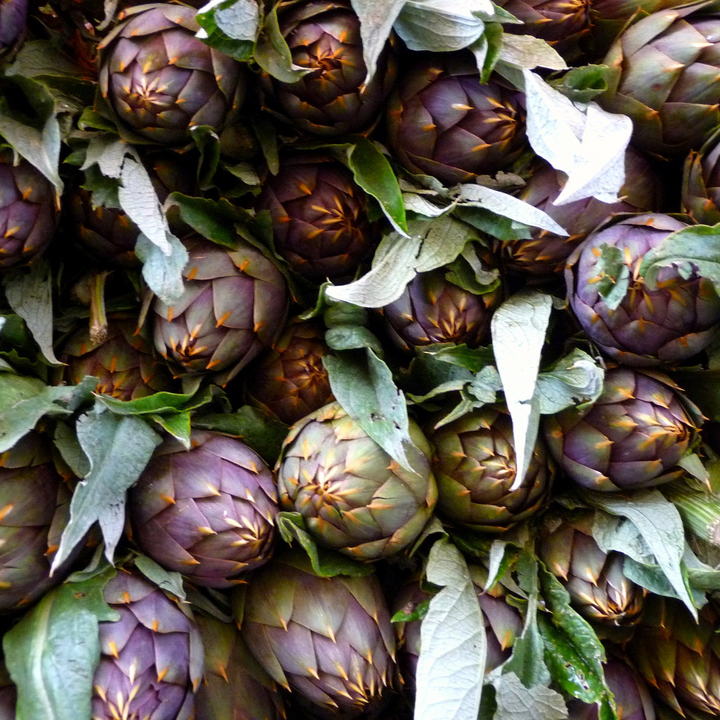
I love artichokes. The flower of a thistle plant, artichoke are a little fussy to prepare but absolutely worth the effort!
Artichokes have been traditionally used as a medical plant for millennia: in Ancient Greece and Rome, artichokes were used for digestive problems, and later in the 16th century, they were a popular treatment for liver problems and jaundice.
Today, artichokes are still used to detoxify the body and improve digestion: extremely rich in fibre, they are also useful in promoting liver health, and have positive effects on gallbladder health. In Body Cycles, I stress the importance of taking particular care of digestive system in Autumn – this time of year is typically drier, leaving us to deal with constipation. To maintain a healthy intestine, eating at least 12-18 grams of soluble and insoluble fibre a day and drinking plenty of water is particularly important – a medium artichoke has an impressive 10.3 grams of fibre, making this vegetable a great way to boost fibre intake.
Impressively, artichokes have been proven to lower cholesterol. They have one of the highest levels of anti-oxidants found in vegetables, packed with phytonutrients such as quercetin, rutin, gallic acid and cynarin, which all help to protect against many health risks and reduce inflammation.
These often thorny flowers, with their hard, waxy outer leaves and fibrous stems, are sometimes intimidating to home cooks – but with a little practice, anyone can treat themselves to delicious fresh artichokes at home! This is how I do it:
- choose artichokes with firm and tightly closed petals
- cut the top of the leaves (where the biggest thorns are)
- pull off the outermost leaves
- trim the stem, leaving about 2cm, and peel it
- to make removing the choke (the fluffy stuff in the centre) easier, I quarter the artichoke and remove it with a small spoon or a pairing knife
Two top tips: wear gloves while preparing artichokes, and put the prepared artichokes in a bowl of cold water acidulated with the juice of one lemon (to prevent browning),
One of my favourite ways to cook in Autumn is to quickly sauté vegetable, serving them still warm with a hearty-yet-light stew. Try to slice the artichokes very thinly, sautéing them with some shallot, garlic, olive oil, and a little bit of broth or water and a squeeze of lemon until tender, then served with freshly ground black pepper and parsley alongside my Butter Bean and Chicken Stew (recipe in BodyCycles) for a warming, nutritious and tasty Autumnal dinner packed with protein and fibre.